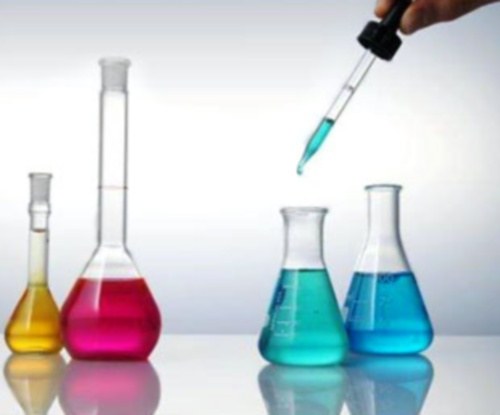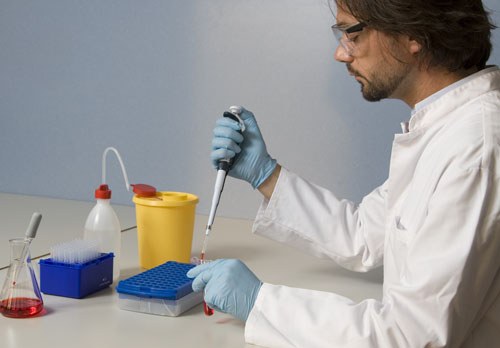Tip 1: How to find volume in chemistry
Instruction
One of the formulas for the volume of the solution: V = m/p, where V is the volume of the solution (ml), m is the mass (g), p is the density (g/ml). If you need to additionally find the mass, then this can be done by knowing the formula and the amount of the desired substance. Using the formula of a substance, we find its molar mass by adding the atomic masses of all the elements included in it. For example, M(AgNO3) = 108+14+16*3 = 170 g/mol. Next, we find the mass according to the formula: m \u003d n * M, where m is the mass (g), n is the amount of the substance (mol), M is the molar mass of the substance (g / mol). It is assumed that the amount of substance is given in the problem.
The next one for finding the volume of the solution is derived from the molar formula: c \u003d n / V, where c is the molar concentration of the solution (mol / l), n is the amount of substance (mol), V is the volume of the solution (l). We deduce: V = n/c. The amount of substance can be additionally found by the formula: n = m/M, where m is the mass, M is the molar mass.
The following are formulas for finding the volume of a gas. V \u003d n * Vm, where V is the volume of gas (l), n is the amount of substance (mol), Vm is the molar volume of gas (l / mol). For normal , i.e. pressure equal to 101 325 Pa 273 K, the molar volume of gas is a constant value and is equal to 22.4 l / mol.
For a gas system, there is a formula: q(x) = V(x)/V, where q(x)(phi) is the volume fraction of the component, V(x) is the volume of the component (l), V is the volume of the system (l) . From this formula, 2 others can be derived: V(x) = q*V, and also V = V(x)/q.
If there is a reaction equation in the condition of the problem, the problem should be solved using it. From the equation you can find the amount of any substance, it is equal to the coefficient. For example, CuO + 2HCl = CuCl2 + H2O. From this we see that the interaction of 1 mol of copper oxide and 2 mol of hydrochloric acid resulted in 1 mol of copper chloride and 1 mol of water. Knowing by the condition of the problem the amount of a substance of only one component of the reaction, one can easily find the amounts of all substances. Let the amount of copper oxide substance be 0.3 mol, then n(HCl) = 0.6 mol, n(CuCl2) = 0.3 mol, n(H2O) = 0.3 mol.
note
Don't forget the units of measurement!
Sources:
- "Collection of Problems in Chemistry", G.P. Khomchenko, I.G. Khomchenko, 2002.
- volume formula from mass
The mass of any substance, molecule is equal to the sum of the masses of its constituent atoms. If the calculation uses relative atomic masses, then the relative molecular mass of the substance is obtained. Relative molecular weight shows how many times the absolute mass of a molecule of a given substance is greater than 1/12 of the absolute mass of a carbon atom. Typically, approximate values of relative atomic and molecular weights are used. These quantities are dimensionless.
Instruction
Calculate the value of each element in the molecule. To find out the relative mass of one atom, look at the periodic system of elements. The serial number is the atomic mass. You can also calculate it using the formula Ar(element)=m(element)/1a.e.m. For ease of calculation, approximate values are used.
Ar(H)=1?2=2;Ar(O)=16?1=16Ar(Fe)=56?2=112;Ar(S)=32?3=96;Ar(O)=16?12 =192
Add up the results. This will be the molecular weight of the substance.
Mr(H2O)=2Ar(H)+Ar(O)=2+16=18
Mr(Fe2(SO4)3)=2Ar(Fe)+3Ar(S)+12Ar(O)=112+96+192=400
In addition to the relative molecular weight, the molar mass is often used in calculations. Its unit of measurement is g/mol. It is numerically equal to the relative molecular weight of the substance.
M(H2O)=18 g/mol
M(Fe2(SO4)3=400 g/mol
Related videos
In the course of a chemical reaction, a variety of substances can be formed: gaseous, soluble, slightly soluble. In the latter case, they precipitate. Often there is a need to know what is the exact mass of the precipitate formed. How can this be calculated?

You will need
- - glass funnel;
- - paper filter;
- - laboratory scales.
Instruction
You can act by experience. That is, carry out a chemical, carefully separate the precipitate formed from the filtrate using an ordinary glass funnel and a paper filter, for example. A more complete separation is achieved by vacuum filtration (on a Buchner funnel).
After that, dry the precipitate - naturally or under vacuum, and weigh it as accurately as possible. Best of all, on sensitive laboratory scales. This is how the task will be solved. This method is resorted to when the exact quantities of the initial substances that have entered into the reaction are unknown.
If you know these quantities, then the problem can be solved much easier and faster. Suppose you need to calculate how much chloride formed 20 grams of chloride - table salt - and 17 grams of silver nitrate. First of all, write the equation: NaCl + AgNO3 = NaNO3 + AgCl.
During this reaction, a very slightly soluble compound is formed - silver chloride, which precipitates as a white precipitate.
Calculate the molar masses of the starting materials. For sodium chloride, it is approximately 58.5 g / mol, for silver nitrate - 170 g / mol. That is, initially, according to the conditions of the problem, you had 20/58.5 = 0.342 moles of sodium chloride and 17/170 = 0.1 moles of silver nitrate.
Thus, it turns out that sodium chloride was initially taken in excess, that is, the reaction on the second starting material will go to the end (all 0.1 moles of silver nitrate will react, “binding” the same 0.1 moles of common salt). How much silver chloride is formed? To answer this question, find the molecular weight of the precipitate formed: 108 + 35.5 = 143.5. Multiplying the initial amount of silver nitrate (17 grams) by the ratio of the molecular weights of the product and the starting substance, you will get the answer: 17 * 143.5/170 = 14.3 grams. This is the exact mass of the precipitate formed during the reaction.
Useful advice
Of course, the answer you got is not very accurate, since you used rounded values for the atomic masses of the elements in your calculations. If greater accuracy is required, it must be taken into account that the atomic mass of silver, for example, is not 108, but 107.868. Accordingly, the atomic mass of chlorine is not 35.5, but 35, 453, etc.
Sources:
- Calculate the mass of the precipitate formed during the interaction
In school chemistry problems, as a rule, it is required to calculate the volume for the gaseous reaction product. You can do this if you know the number of moles of any participant in the chemical interaction. Or find this amount from other task data.




